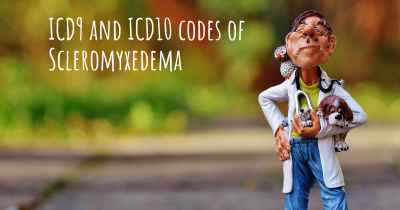What is the history of Scleromyxedema?
When was Scleromyxedema discovered? What is the story of this discovery? Was it coincidence or not?

Scleromyxedema is a rare, chronic, and progressive skin disorder that falls under the category of mucinosis, a group of diseases characterized by the abnormal accumulation of mucin in the skin and other organs. It was first described in medical literature in 1953 by Dr. Felix Pinkus, a German dermatologist. Since then, several cases have been reported worldwide, providing a deeper understanding of this condition.
The exact cause of scleromyxedema remains unknown, and researchers have proposed various theories to explain its development. Some believe that it may be an autoimmune disorder, where the body's immune system mistakenly attacks its own tissues. Others suggest that it could be triggered by an overproduction of certain proteins or growth factors. However, none of these theories have been definitively proven.
Scleromyxedema primarily affects the skin, but it can also involve other organs such as the heart, lungs, and gastrointestinal tract. The condition is characterized by the presence of papules, plaques, and nodules on the skin, which are often firm, waxy, and reddish-brown in color. These skin lesions are typically distributed symmetrically on the face, neck, upper trunk, and limbs. In addition to skin changes, individuals with scleromyxedema may experience symptoms such as joint pain, muscle weakness, difficulty swallowing, and breathing problems.
Diagnosing scleromyxedema can be challenging due to its rarity and similarity to other skin conditions. A thorough medical history, physical examination, and skin biopsy are usually necessary to confirm the diagnosis. Skin biopsy involves removing a small sample of affected skin for microscopic examination, which reveals the characteristic accumulation of mucin and abnormal fibroblast proliferation.
There is no specific cure for scleromyxedema, and treatment mainly focuses on managing symptoms and improving quality of life. The approach may involve a combination of medications and therapies. Corticosteroids, such as prednisone, are commonly prescribed to reduce inflammation and suppress the immune system. Other immunosuppressive drugs, such as methotrexate or cyclophosphamide, may be used in severe cases. Additionally, physical therapy and occupational therapy can help alleviate joint stiffness and improve mobility.
The prognosis of scleromyxedema varies and depends on the extent of organ involvement and response to treatment. Some individuals experience a relatively stable course with mild symptoms, while others may have a more aggressive disease progression. Complications can arise from organ involvement, such as heart or lung problems, which may require additional medical interventions.
Research efforts continue to unravel the underlying mechanisms and potential treatment options for scleromyxedema. Clinical trials are being conducted to evaluate the effectiveness of various medications and therapies. Additionally, advancements in understanding the genetic and molecular basis of the disease may pave the way for targeted therapies in the future.
In conclusion, scleromyxedema is a rare and complex skin disorder characterized by the abnormal accumulation of mucin in the skin and other organs. Although its exact cause remains unknown, medical professionals have made significant progress in diagnosing and managing this condition. Ongoing research aims to further enhance our understanding and develop more effective treatments for individuals affected by scleromyxedema.
Posted Jan 26, 2019 by Kay 2500
Posted Oct 26, 2020 by Rob 2750








